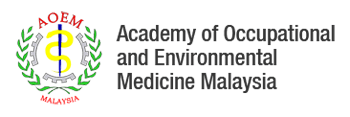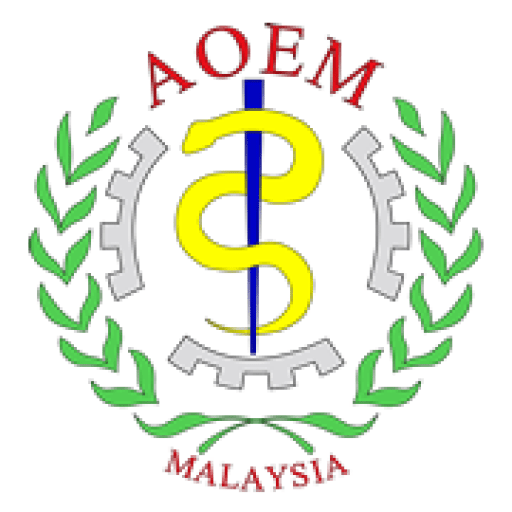On May 1st, 2025, a date dedicated to celebrating workers across the nation – Workers’ Day (Hari Pekerja) – the national broadcaster RTM, through its health discussion program “Diari Rawat,” aptly turned its focus to a critical occupational health issue: the severe lung disease, Silicosis.
Joined by Respiratory Consultant Dr. Shazatul Syakirin Sirol Aflah from the Ministry of Health Malaysia, and Public Health Medicine Specialist and Occupational Health Expert Professor Dr. Victor Hoe from Universiti Malaya, the discussion highlighted the dangers of inhaling silica dust and the challenges surrounding this chronic lung disease. Their insightful conversation, broadcast on this important day, shed light on this often underestimated, irreversible condition affecting workers.
Here are the key takeaways:
Hazard Recognition & High-Risk Focus: Beyond the Basics
The experts reiterated that silicosis stems from inhaling Respirable Crystalline Silica (RCS). While common in construction, mining, and quarrying, Dr Hoe specifically flagged the high silica content (often >90%) and significant risk associated with artificial stone countertop fabrication.
- OSH Takeaway: Ensure your Hazard Identification, Risk Assessment, and Risk Control (HIRARC). Is RCS explicitly listed in your chemical register where applicable? Are Safe Work Procedures (SWPs) adequate for these high-exposure tasks?
The Challenge of Latency & Under-Diagnosis: Implications for Surveillance
The long latency period (10-30 years for chronic silicosis) and non-specific symptoms (cough, dyspnoea) were highlighted. Dr Shazatul noted potential confusion with TB on X-rays.
- OSH Takeaway: This underscores the critical importance of detailed occupational history in medical surveillance programs. Are your nominated Occupational Health Doctors (OHDs) thoroughly probing past exposures? Ensure workers understand the importance of reporting past jobs involving potential silica exposure during check-ups. Are baseline and periodic chest X-rays and lung function tests conducted as per regulations for exposed workers (e.g., those needing respirators >30 days/year)?
Reinforcing the Hierarchy of Controls: No Room for Complacency
With no cure available, the discussion firmly centred on prevention Dr Hoe implicitly referenced the mandatory hierarchy of controls under OSHA 1994:
- Elimination/Substitution: Are you actively seeking silica-free alternatives or lower-silica content materials during the design/procurement phase? Can processes be redesigned to avoid dust generation?
- Engineering Controls: The effectiveness of wet methods and Local Exhaust Ventilation (LEV) was mentioned. Are these systems properly designed, routinely maintained, and their effectiveness verified (e.g., via exposure monitoring)? Is containment used where feasible?
- Administrative Controls: This includes establishing clear written exposure control plans, restricting access to high-exposure areas, robust training, and designating a competent person to oversee implementation. Are your plans comprehensive and actively managed?
- Personal Protective Equipment (PPE): Essential, but the last line of defence. Emphasised was the need for appropriate and correctly used respiratory protection. Are fit-testing programmes robust? Is training practical and addressing actual site conditions?
Compliance, Communication & Worker Engagement:
The experts touched upon worker rights and the role of DOSH and PERKESO.
- OSH Takeaway: Effective OSH management requires clear communication and worker involvement. Are workers actively trained on silica hazards, control measures, and health effects? Are they encouraged to report concerns? Regular toolbox talks or safety briefings specifically on silica hazards for relevant trades are vital. Ensure clear communication about medical surveillance findings and compensation rights (PERKESO).
The Unacceptable Outcome: Driving the Urgency
The discussion consistently underlined the irreversible nature of silicosis and its severe complications (TB, cancer).
- OSH Takeaway: Use this expert validation to reinforce the urgency and importance of stringent silica controls within your organization. Frame non-compliance not just as a legal failure, but a potential health catastrophe for workers.
Moving Forward:
This Workers’ Day discussion, featuring leading experts including AOEMM’s own Prof Dr Victor Hoe, serves as a potent reminder: Silicosis is preventable, but requires unwavering commitment to established OSH principles. Let’s use these insights to critically review our current silica management programmes, identify gaps, and implement robust, verifiable controls to ensure our workers go home healthy every day.
Role of AOMEM
Dr Hoe describes the role of the Academy of Occupational and Environmental Medicine Malaysia (AOMEM) in enhancing awareness and knowledge among medical practitioners about occupational diseases, including silicosis and asbestosis. AOMEM organises technical updates and courses for doctors and plans international events like the 24th Asian Congress of Occupational Health 2026 in Kuching, Sarawak, to facilitate knowledge sharing.
Article written by Victor Hoe

